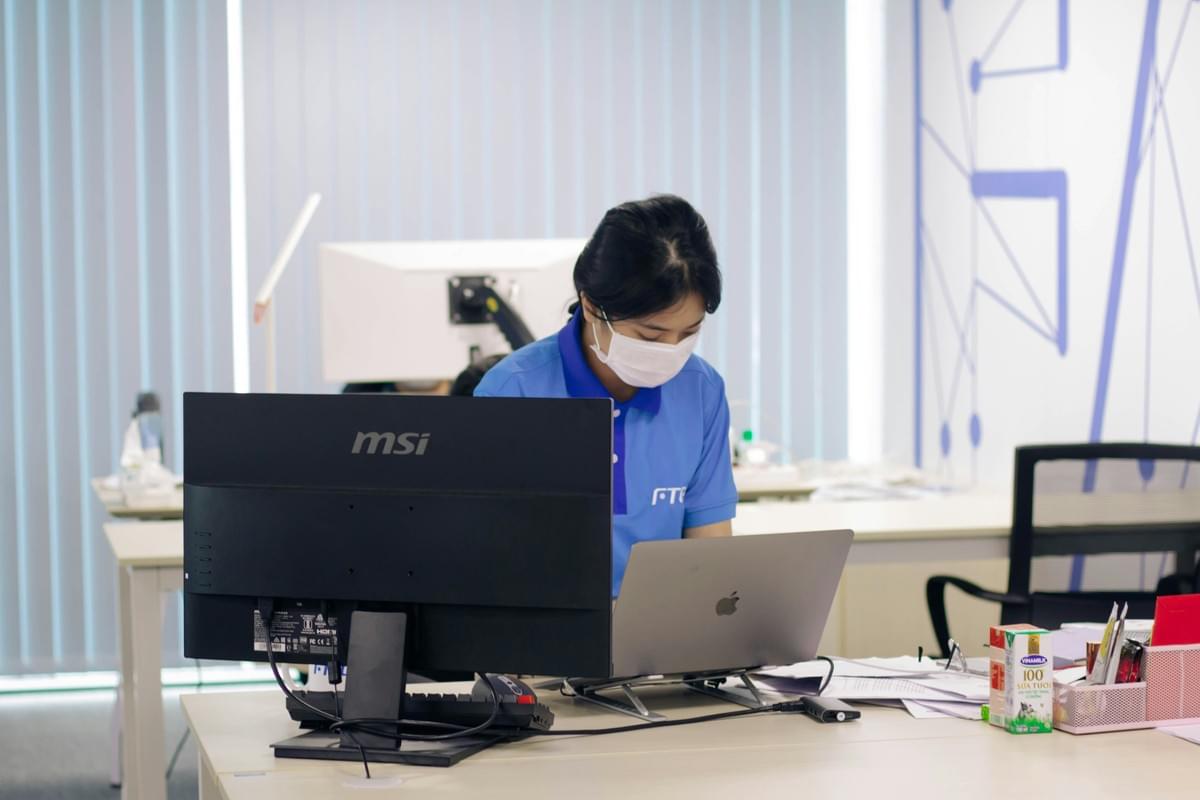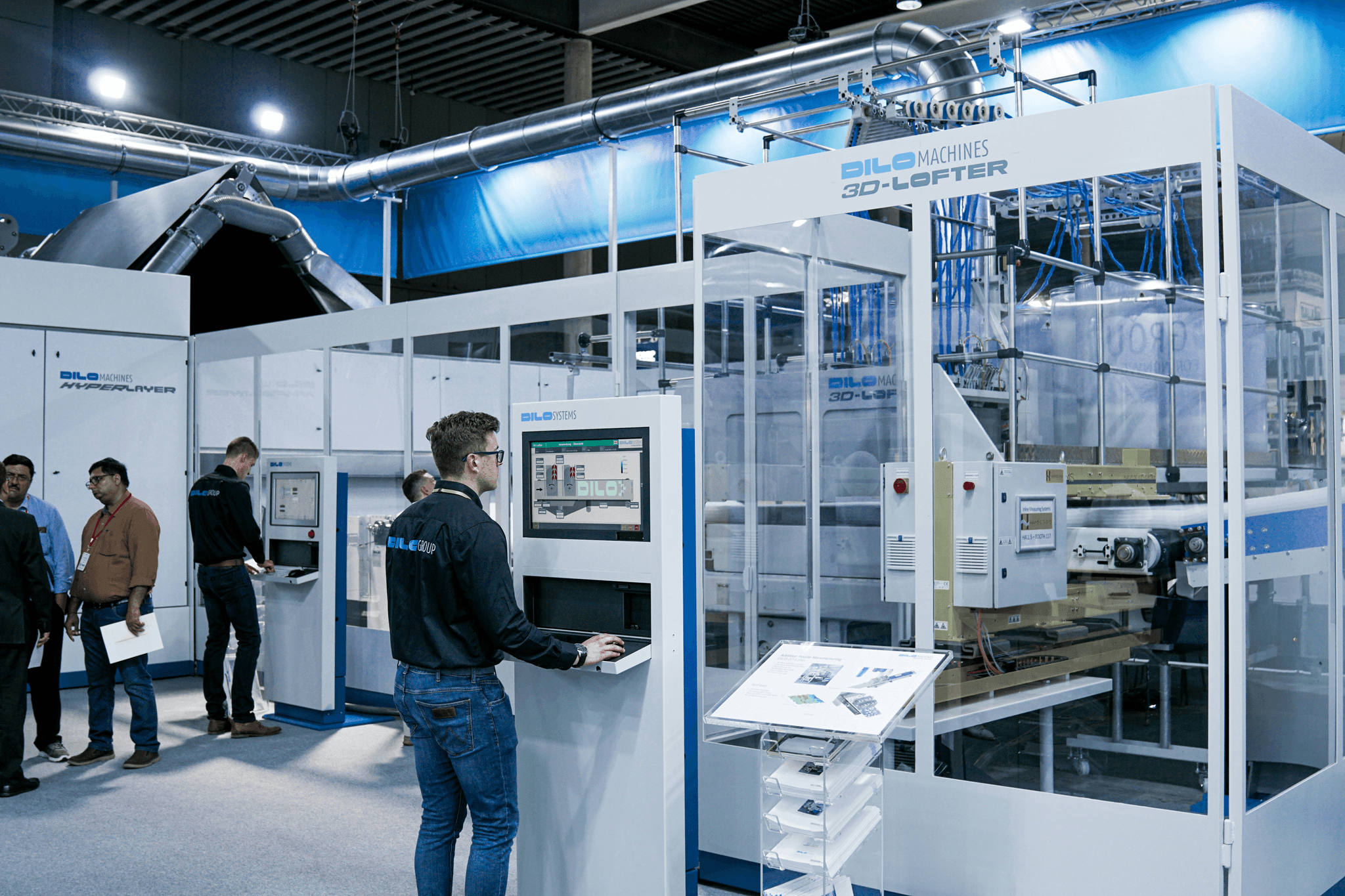Introduction
In the world of manufacturing, ensuring product quality is not just a necessity; it's a cornerstone of success. The process of quality control involves systematic inspections and assessments, with AQL sampling playing a pivotal role in determining acceptable levels of defects. By utilizing AQL tables, manufacturers can streamline their quality inspection processes and maintain high standards.
Understanding AQL Sampling Basics
AQL, or Acceptable Quality Level, serves as a critical benchmark in quality control by defining the maximum number of defective items considered acceptable in a sample batch. This concept helps companies balance the trade-off between cost and quality, allowing for efficient production without sacrificing standards. Familiarity with AQL sampling basics equips quality control inspectors with the tools needed to make informed decisions during inspections.
Importance of Quality Control in Manufacturing
Quality control is vital for maintaining customer satisfaction and brand reputation in today's competitive marketplace. Manufacturers that prioritize effective QA inspections can minimize waste, reduce costs, and enhance overall efficiency while ensuring that products meet or exceed industry standards. As such, investing in robust quality control practices—including AQL sampling—can lead to long-term success and customer loyalty.
The Role of AQL Tables in Inspections
AQL tables serve as essential guides for inspectors during the quality inspection process, outlining specific criteria for sampling sizes based on defect levels. These tables help streamline decision-making by providing clear parameters for what constitutes acceptable quality within different manufacturing contexts. Ultimately, leveraging AQL tables allows quality control companies to implement more precise inspection strategies that drive continuous improvement.
What is AQL Sampling?

AQL sampling, or Acceptable Quality Level sampling, is a vital concept in quality control that helps manufacturers assess product quality without inspecting every single item. It provides a statistical method to determine the maximum number of defective items that can be considered acceptable within a sample size. By implementing AQL sampling, companies can maintain efficient operations while ensuring that their products meet the desired quality standards.
Defining Acceptable Quality Level
The Acceptable Quality Level (AQL) is a benchmark used in quality control to define the maximum allowable number of defects in a batch of products. This level varies depending on the nature of the product and its intended use, thereby influencing how stringent or lenient inspections should be. Essentially, AQL helps balance cost-effectiveness with customer satisfaction by establishing clear criteria for acceptable quality during manufacturing processes.
Historical Context of AQL in Manufacturing
AQL has its roots in post-World War II manufacturing practices when industries sought to enhance production efficiency while minimizing waste. The introduction of statistical quality control methods led to the development of AQL tables as essential tools for inspectors and quality control companies alike. Over time, these tables have evolved into standardized references that guide manufacturers through effective quality inspections across various industries.
Key Benefits of AQL Sampling
One major benefit of AQL sampling is its ability to streamline the inspection process while maintaining high-quality standards. By using an AQL table, businesses can focus their resources on inspecting only a portion of their products rather than performing exhaustive checks on every item produced. This not only saves time and money but also allows for more effective utilization of manufacturing quality inspection software and skilled quality control inspectors who can target areas needing improvement based on statistical analysis.
AQL Sampling Tables Explained

AQL sampling tables are essential tools in the realm of quality control, providing a structured approach to evaluating product quality during inspections. These tables help inspectors determine the number of samples to test and the criteria for acceptance or rejection based on acceptable quality levels (AQL). Understanding how to navigate these tables is crucial for effective quality inspection, ensuring that manufacturing processes meet established standards.
Breakdown of AQL Table Structures
A typical AQL table consists of several columns and rows, each representing different factors such as lot size, sample size, and acceptance/rejection numbers. The rows usually denote various lot sizes, while the columns outline different AQL percentages that correspond to acceptable defect rates. This structured layout allows quality control inspectors to quickly reference and choose appropriate sampling plans tailored to specific manufacturing scenarios.
Each cell within an AQL table indicates how many defective items can be tolerated before a lot is rejected. For example, if a lot contains 100 units with an AQL of 1%, the inspector can only accept one defective item; otherwise, the entire batch fails inspection. This precision enables manufacturers and quality control companies to maintain high-quality standards while minimizing waste and rework costs.
How to Read AQL Tables for Inspectors
Reading an AQL table may seem daunting at first glance; however, once you understand its mechanics, it becomes straightforward. Inspectors begin by identifying the total number of items in a shipment (the lot size) and then locating this figure in the leftmost column of the table. From there, they select their desired acceptable quality level (usually expressed as a percentage) across the top row.
After pinpointing both values—lot size and AQL percentage—the inspector finds where these intersect within the table's grid. This intersection provides critical information: it reveals how many samples should be taken from that lot and how many defects are permissible before rejection occurs. By mastering this reading technique, quality control inspectors can enhance their efficiency during QA inspections.
Practical Applications of AQL Tables
The practical applications of AQL tables extend beyond mere number-crunching; they serve as vital instruments in various industries that rely on stringent quality control measures. For instance, manufacturers often use these tables during incoming inspections to verify product conformity before they enter production lines or reach consumers' hands. Quality control companies frequently incorporate them into their protocols for managing supplier relationships effectively.
Furthermore, manufacturing quality inspection software often integrates AQL sampling methodologies into their systems for real-time analysis and reporting capabilities. This integration streamlines processes by automating calculations based on pre-set parameters defined by industry standards or specific client requirements. Ultimately, using AQL tables not only enhances accuracy but also fosters trust between manufacturers and consumers by ensuring products meet rigorous safety and performance benchmarks.
Levels of Inspection in AQL

When it comes to AQL sampling, understanding the different levels of inspection is crucial for effective quality control. Each level serves a specific purpose and determines the extent to which products are sampled and inspected during the manufacturing process. By carefully selecting these levels, companies can enhance their quality inspection processes and minimize risks associated with defective products.
Different Levels of AQL Sampling
AQL sampling typically includes three primary levels: General Inspection Level I, II, and III. Level I is often used for less critical items, while Level II serves as the default level for most inspections, balancing thoroughness with efficiency. Finally, Level III is reserved for high-risk items or when a stricter quality control approach is necessary; this ensures that any potential defects are caught early in the process.
Each level corresponds to specific sample sizes and acceptance criteria outlined in an AQL table. Quality control inspectors must be well-versed in these distinctions to effectively implement a sampling plan tailored to their product's risk profile. Understanding these levels allows manufacturers to allocate resources wisely while ensuring that quality control remains robust throughout production.
Comparing Sampling Plans Based on Risk
Risk assessment plays a vital role in determining which AQL sampling plan should be employed. By comparing different plans based on potential failure consequences, manufacturers can make informed decisions about how stringent their inspections need to be. For instance, high-risk products may require more rigorous testing protocols compared to low-risk items.
Quality control companies often assist businesses in evaluating these risks by providing expertise on industry standards and best practices for QA inspections. This collaboration helps organizations identify the most suitable AQL tables for their specific needs while optimizing costs associated with excessive or inadequate inspections. Ultimately, a balanced approach ensures that both product quality and profitability are maintained.
Effective Strategies for Selecting Inspection Levels
Selecting the appropriate inspection level involves several strategic considerations that align with overall manufacturing goals. First and foremost, it’s essential to assess product complexity and customer expectations; higher stakes may warrant stricter sampling plans using comprehensive AQL tables tailored for such scenarios. Additionally, historical data on defect rates can guide decisions by revealing patterns that indicate whether adjustments are necessary.
Collaboration with experienced quality control inspectors is another effective strategy; they can provide insights into industry benchmarks as well as practical recommendations based on past experiences with similar products or markets. Furthermore, integrating manufacturing quality inspection software can streamline this decision-making process by automating data analysis related to previous inspections’ outcomes—leading to more informed choices regarding future inspection levels.
By understanding different levels of AQL sampling and employing thoughtful strategies when selecting them based on risk factors, organizations can significantly improve their overall quality control processes while ensuring customer satisfaction remains at the forefront of operations.
Role of Quality Control Companies

In the realm of manufacturing, quality control companies play a pivotal role in enhancing AQL processes. They bring expertise and resources that allow businesses to implement effective quality inspections tailored to their specific needs. By leveraging AQL sampling methods, these companies help ensure that products meet established quality standards before reaching the market.
How Quality Control Companies Enhance AQL Processes
Quality control companies enhance AQL processes by providing specialized knowledge and systems designed for rigorous quality inspection. Their trained quality control inspectors utilize AQL tables to determine acceptable levels of defects in sampled products, ensuring manufacturers can confidently uphold product integrity. Moreover, these companies often employ advanced methodologies and technologies that streamline the inspection process, making it more efficient and reliable.
By integrating statistical analysis with hands-on inspections, they can identify potential issues early in the production cycle. This proactive approach helps reduce waste and minimize costs associated with defective products reaching consumers. Ultimately, the collaboration between manufacturers and quality control companies fosters a culture of continuous improvement that is essential for maintaining high standards in product quality.
Spotlight on China Inspection Pro's Expertise
China Inspection Pro stands out as a leader among quality control companies specializing in manufacturing inspections across various industries. With a deep understanding of AQL sampling techniques and an extensive portfolio of services, they provide comprehensive solutions tailored to client requirements. Their team of experienced quality control inspectors is well-versed in interpreting AQL tables and applying them effectively during on-site inspections.
The company's commitment to excellence ensures that clients receive timely reports detailing inspection outcomes based on established criteria from AQL tables. This transparency not only builds trust but also allows manufacturers to make informed decisions regarding production adjustments or improvements needed for future batches. Furthermore, China Inspection Pro’s expertise extends beyond traditional methods; they are at the forefront of integrating technology into their QA inspections.
Integrating Manufacturing Quality Inspection Software
The integration of manufacturing quality inspection software represents a significant advancement in how quality control companies operate today. Such software enhances the efficiency and accuracy of QA inspections by automating data collection and analysis based on predefined parameters from AQL tables. This digital approach reduces human error while providing real-time insights into product compliance with established standards.
Additionally, this software facilitates seamless communication between manufacturers and their chosen quality control inspector by offering easy access to inspection results and trends over time. The ability to track performance metrics allows businesses to address issues swiftly before they escalate into larger problems affecting overall product integrity. As technology continues to evolve, integrating such innovative solutions will be crucial for maintaining competitive advantages through rigorous adherence to AQL sampling practices.
The Future of Quality Inspection

As we look to the horizon of quality inspection, it's clear that innovations are reshaping the landscape. The evolution of quality control is not just about maintaining standards; it's about enhancing efficiency and accuracy in manufacturing processes. With a focus on AQL sampling and its application in various industries, the future promises to be both exciting and transformative.
Innovations in QA Inspections
Innovations in QA inspections are revolutionizing how businesses approach quality control. From advanced analytics to automated inspection systems, these new tools are making it easier for quality control inspectors to identify issues before they escalate. Moreover, the integration of manufacturing quality inspection software allows for real-time monitoring and assessment, ensuring that AQL tables are utilized effectively throughout the production process.
One notable innovation is the use of artificial intelligence (AI) in quality inspections, which can analyze data at a speed and accuracy unattainable by human inspectors alone. This technology not only enhances the reliability of AQL sampling but also frees up valuable time for quality control companies to focus on strategic improvements rather than routine checks. As these innovations continue to emerge, we can expect a significant shift towards more proactive and predictive approaches in quality management.
The Impact of Technology on AQL Sampling
Technology's impact on AQL sampling is profound and multifaceted. With advancements like machine learning algorithms, manufacturers can now analyze vast amounts of data from past inspections to predict potential faults before they occur. This proactive approach ensures that products meet or exceed acceptable quality levels while minimizing waste—a win-win for both manufacturers and consumers.
Additionally, mobile applications for quality control allow inspectors to access AQL tables on-the-go, streamlining the inspection process significantly. By digitizing traditional methods associated with manual inspections, these tools enhance efficiency while reducing human error—an essential factor when adhering to stringent AQL standards. The combination of technology with traditional practices creates a robust framework for effective quality control that adapts seamlessly as industry demands evolve.
Trends in Quality Control Practices
Emerging trends in quality control practices indicate a shift towards more collaborative approaches between manufacturers and their chosen quality control companies. Companies are increasingly recognizing the value of partnerships that leverage shared expertise for improved outcomes in QA inspections and overall product integrity. This trend fosters an environment where continuous improvement becomes ingrained within company culture rather than relegated solely to compliance checklists.
Moreover, sustainability is becoming a central theme within modern manufacturing processes—quality inspections now often include assessments related to environmental impact alongside traditional metrics like those found in AQL tables. As consumers demand greater transparency regarding product sourcing and production ethics, manufacturers must adapt their practices accordingly or risk falling behind competitors who prioritize responsible production methods.
Finally, training programs focusing on developing skilled quality control inspectors equipped with knowledge about both technological tools and traditional methodologies are becoming essential investments for companies aiming for excellence in their operations. By embracing these trends, organizations can ensure they remain competitive while delivering high-quality products that meet evolving market expectations.
Conclusion
In the realm of quality control, AQL sampling stands as a beacon of reliability and efficiency. By allowing manufacturers to maintain high standards while minimizing waste, AQL sampling proves to be an invaluable tool in the quality inspection process. Its structured approach not only enhances product quality but also fosters trust between suppliers and consumers, ultimately driving business success.
Benefits of AQL Sampling in Quality Control
The benefits of AQL sampling in quality control are manifold, making it a preferred choice for many manufacturers. Firstly, it provides a systematic method to assess product quality without the need for exhaustive inspections that can drain resources and time. Secondly, utilizing an AQL table allows companies to identify acceptable defect levels tailored to their specific needs, ensuring that products meet customer expectations while minimizing costs associated with overproduction or rework.
Moreover, implementing AQL sampling enhances decision-making by providing clear criteria for acceptance and rejection during inspections. This clarity not only streamlines the quality control process but also empowers teams to act swiftly when issues arise. Ultimately, embracing AQL sampling leads to improved product consistency and customer satisfaction—two cornerstones of successful manufacturing.
How to Effectively Implement AQL Tables
To effectively implement AQL tables within a manufacturing setup requires careful planning and execution. Start by determining the appropriate acceptance levels based on product specifications and industry standards; this will guide inspectors in evaluating quality effectively during QA inspections. Once established, ensure that all team members are trained on how to read and utilize these tables so they can make informed decisions during the inspection process.
Integrating manufacturing quality inspection software can further enhance the implementation of AQL tables by automating data collection and analysis. This technology streamlines workflows while reducing human error—an essential factor when dealing with multiple variables in production lines. Regular reviews of your chosen AQL parameters will help keep them aligned with evolving market demands and regulatory requirements.
Choosing the Right Quality Control Inspector
Selecting the right quality control inspector is crucial for maintaining high standards throughout your production processes. Look for individuals or firms with extensive experience in using AQL sampling techniques; their familiarity with various industries will ensure they understand unique challenges you may face during inspections. Additionally, consider inspectors who leverage modern tools such as manufacturing quality inspection software—this can provide deeper insights into potential areas for improvement.
It's also essential that your chosen inspector embodies strong communication skills; they should be able to convey findings clearly and work collaboratively with your team towards solutions when issues arise during QA inspections. Finally, check references or reviews from previous clients to gauge their effectiveness in upholding rigorous quality control measures through diligent use of an AQL table framework.
